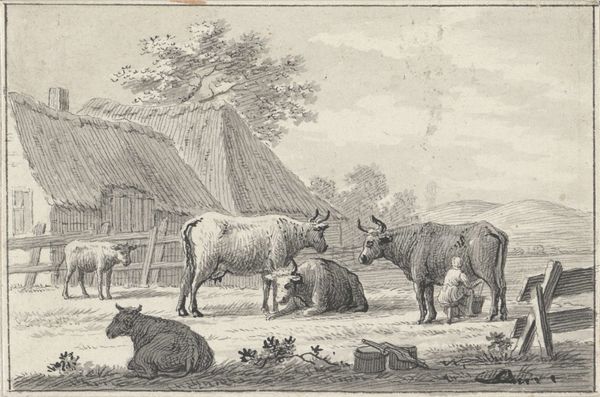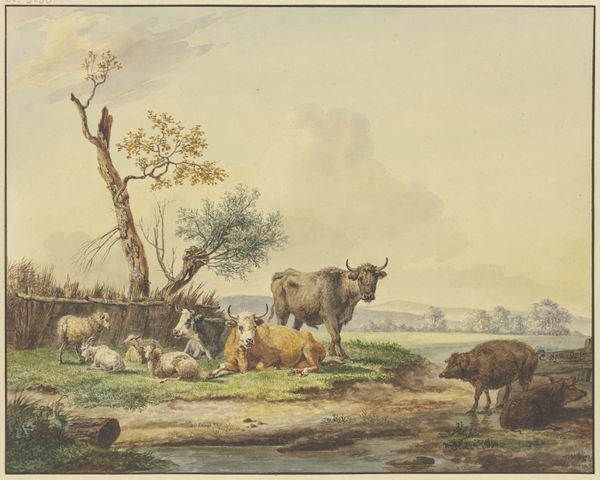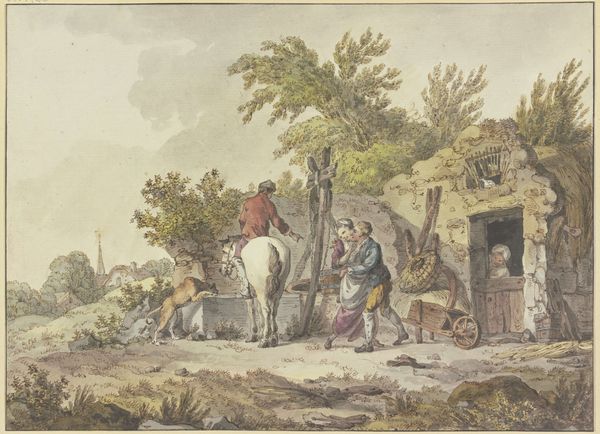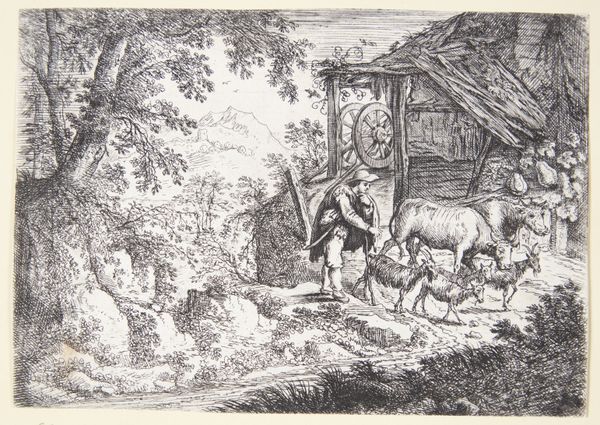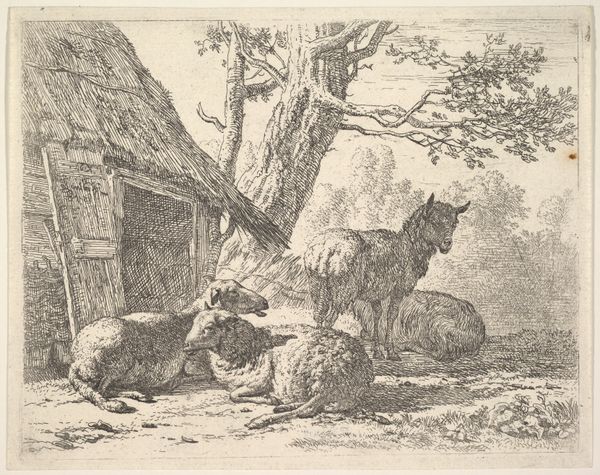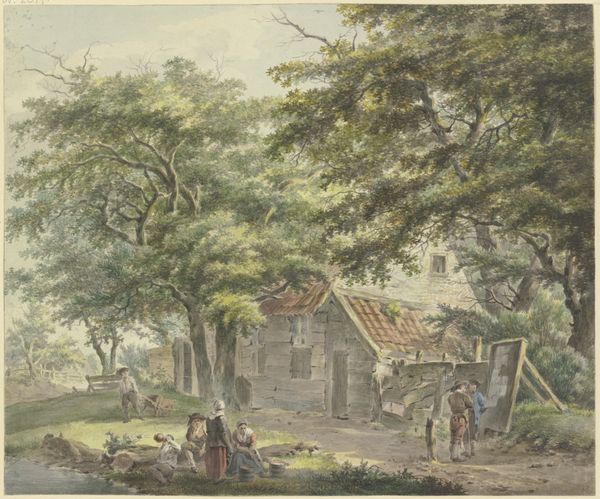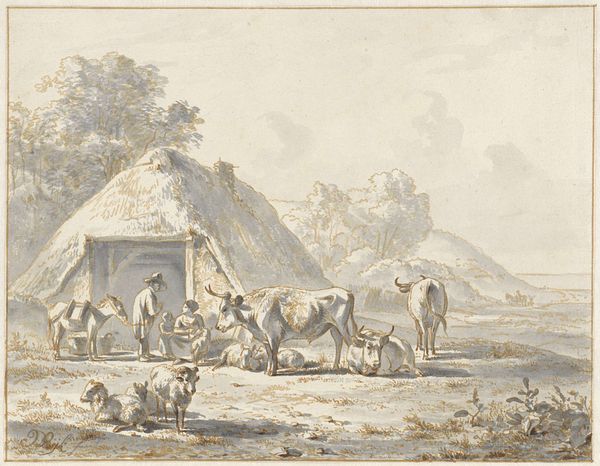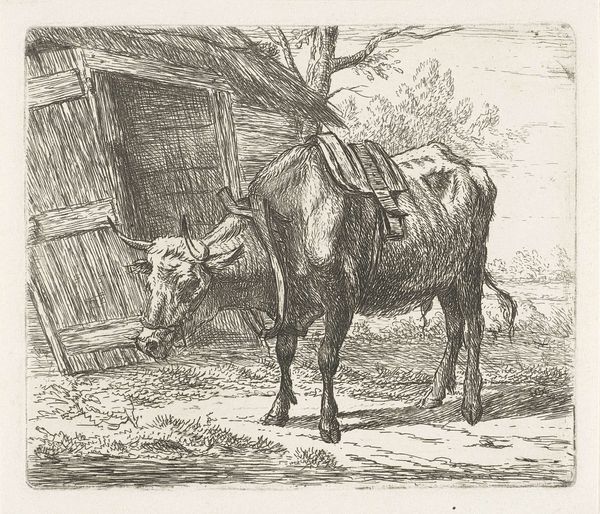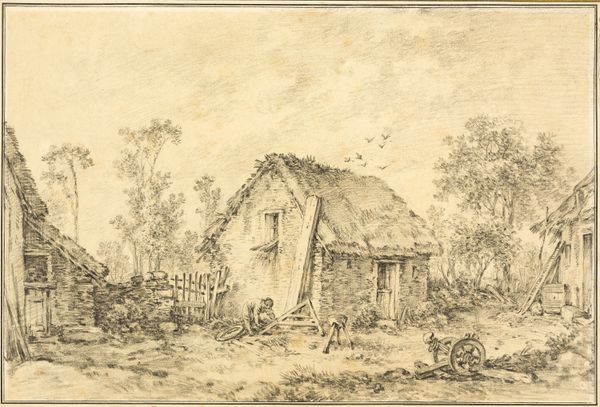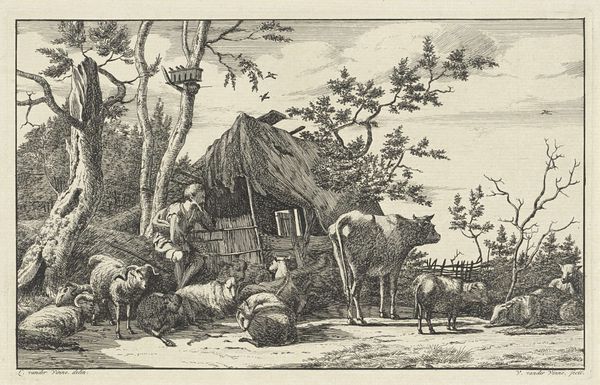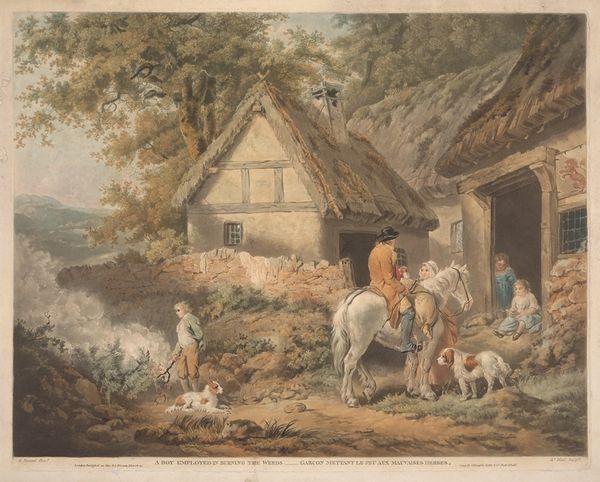
En fårehyrde med sin hjord ved et skur 1746 - 1797
0:00
0:00
Dimensions: 133 mm (height) x 223 mm (width) (bladmaal)
Editor: This is "A Shepherd with his Flock by a Shed" by Hendrik Willem Schweickhardt, made sometime between 1746 and 1797. It's a watercolour and drawing. The scene feels peaceful, like a snapshot of simple country life. I'm struck by the earthy tones. What do you see in this piece that I might be missing? Curator: It’s interesting that you say “peaceful.” When I look at it, I see a quiet, reflective melancholy. Schweickhardt often imbued his landscapes with a certain… knowing sadness. Maybe it's the drooping posture of the shepherd, or the almost sepia quality of the wash. He creates a lovely sense of depth with those watercolour layers. And consider: what did "nature" and the rural ideal *mean* during this period? Editor: That's interesting! I hadn't thought about it as melancholy. You're right, the shepherd does seem a little downcast. What was significant about the rural ideal at that time? Curator: Think about the burgeoning Industrial Revolution. Increasingly, the simple life was seen as morally superior, less corrupt than city life, offering an escape. Schweickhardt captures that longing, but with a twist – his landscapes often acknowledge the hardships and realities of rural life. It’s a subtle dance between idealization and realism. Is it the countryside they yearn for, or perhaps a golden, idyllic past? Editor: That makes so much sense. It's more than just a pretty picture; it's a commentary on society at the time. The romanticism movement wasn't just about beauty; it was a social statement. Curator: Exactly! It's a dialogue, isn’t it? This artwork speaks of a complicated past, and of dreams and anxieties around a rapidly changing world. And art can speak to you and me. Isn't that marvelous? Editor: It is! I’ll definitely be approaching similar artworks with that historical context in mind going forward. Thanks!
Comments
No comments
Be the first to comment and join the conversation on the ultimate creative platform.
